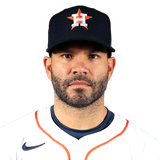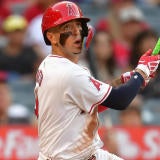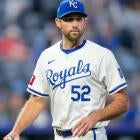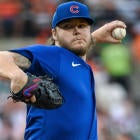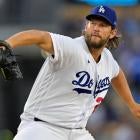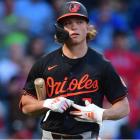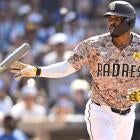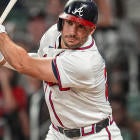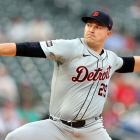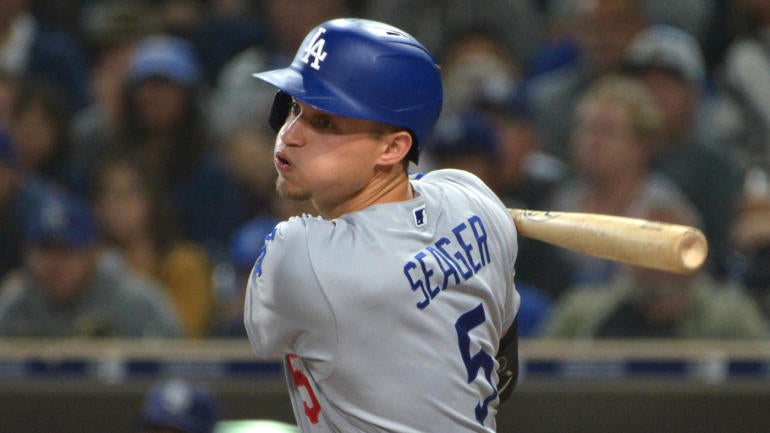
Normally, I'd disregard postseason performance when assessing players for the upcoming season. It's just a drop in the bucket after six months of stat accumulation and doesn't carry more weight just because it came on a larger stage.
But we're not coming off a six-month season. We're coming off a 2 1/2-month season, and given the relative insignificance of that sample, I crave more data wherever I can get it.
It seems foolish, then, to treat an extra month of data like an afterthought, especially for players whose postseason performance completely flipped the narrative of their 2020 campaign. Sometimes players get off to slow starts and it takes that third month to get them going. If combining postseason stats with regular season stats might actually move the needle for some, why wouldn't we do it?
Only players who advanced as far as the League Championship Series saw significant movement in their stat lines, and it helps that both of those series went seven games. From the four teams that participated — the Dodgers, Rays, Braves and Astros — I've come up with six players whose postseason performance genuinely moved the needle for me, impacting my rankings for 2021.
As you can probably guess, two of them are Randy Arozarena and Corey Seager.
I was comfortable writing off Randy Arozarena when he hit seven home runs in just 64 at-bats for the Rays during the regular season. He had been, after all, just a middling prospect for the Cardinals, projecting as a fourth outfielder type, and his plate discipline and launch angle left something to be desired. But 10 home runs later, I'm forced to admit it was probably more than just a hot streak. His combined .745 slugging percentage, after all, would have led all qualifiers. Whether he settles in as an early-round type or just a solid starter in Fantasy remains to be seen, but he drives the ball to the opposite field well and is fast enough to add stolen bases to his repertoire. And seeing as the Rays dealt away a legitimate pitching prospect, Matthew Liberatore, to acquire him, I dare say the Rays saw it coming.
| ||||||||||||
The 2016 NL Rookie of the Year has never hit more than 26 home runs in a season. He came within three of that total in what amounts to half a season. By virtually every Statcast batted-ball metric, he rated as something akin to Mike Trout during the regular season, but anybody can get hot for two months, right? That third month in which he homered eight times en route to NLCS and World Series MVP honors makes it harder to dispute. Now fully recovered from Tommy John surgery, the former top prospect in baseball has fully grown into his skill set and deserves to be mentioned in the same breath as Trevor Story and Francisco Lindor at a star-studded position.
| ||||||||||||
Jose Altuve was a disaster during the regular season, batting .219 with a .648 OPS, and the easy assumption would have been that he was either in steep decline already as a 30-year-old or truly just a creation of the Astros' sign-stealing scandal that came to light in the offseason. But apart from having a worse (albeit still excellent) strikeout rate, his batted-ball profile hardly changed, and it was clear from some his teammates' numbers that the Astros were pressing, desperate to validate themselves after being made into villains. Only in the postseason did they loosen up, with Altuve leading the way by homering five times in just 13 games. Many will fixate on the regular season numbers and write him off next year, but he's already demonstrated he can come roaring back.
| ||||||||||||
Another example of an Astros hitter who appeared to be pressing during the regular season in order to save face, Carlos Correa nonetheless kept his strikeouts in check and didn't let his launch angle get out of whack. And as with Altuve, it ultimately paid off, resulting in more home runs during the postseason (six) than during the regular season (five). But if the regular season numbers get all the focus, people will see the .383 slugging percentage and presume he's washed, not realizing that his postseason run allowed him to salvage a respectable batting line. He's only 26 and was looking like a perennial first-rounder a few years ago, so let's not be so quick to write him off.
| ||||||||||||
Ian Anderson of course made a strong impression during the regular season, but you can ascribe only so much legitimacy to a six-start stretch. Having another four starts with more of the same goes a lot further to confirming what we were beginning to believe for the rookie, which is that he's on the verge of greatness. He didn't allow an earned run until his fourth postseason start, continuing to baffle hitters with a curveball that's difficult to swing at and a changeup that's difficult to connect with. His ability to mix his pitches is beyond his years, and it shows up in his strikeout rate. The walks may hold him back for now, but his best-case scenario looks like something truly spectacular.
| ||||||||||||
Julio Urias is already difficult to size up since he has yet to know failure as a major-leaguer but doesn't have particularly strong peripherals and has had to contend with changes in role and workload at the drop of a hat. While he had a 3.27 ERA during the regular season, his 5.06 xFIP points to trouble ahead if his strikeout rate remains so low and his fly-ball rate so high. He was genuinely dominant in the postseason, though, and if he can sustain the elite whiff rate and 11.3 K/9 that he achieved across those six appearances (acknowledging that they came mostly in three- and four-inning spurts), those concerns would mostly be out the window. It's a reminder that we still don't know just how good he could be.
| ||||||||||||







